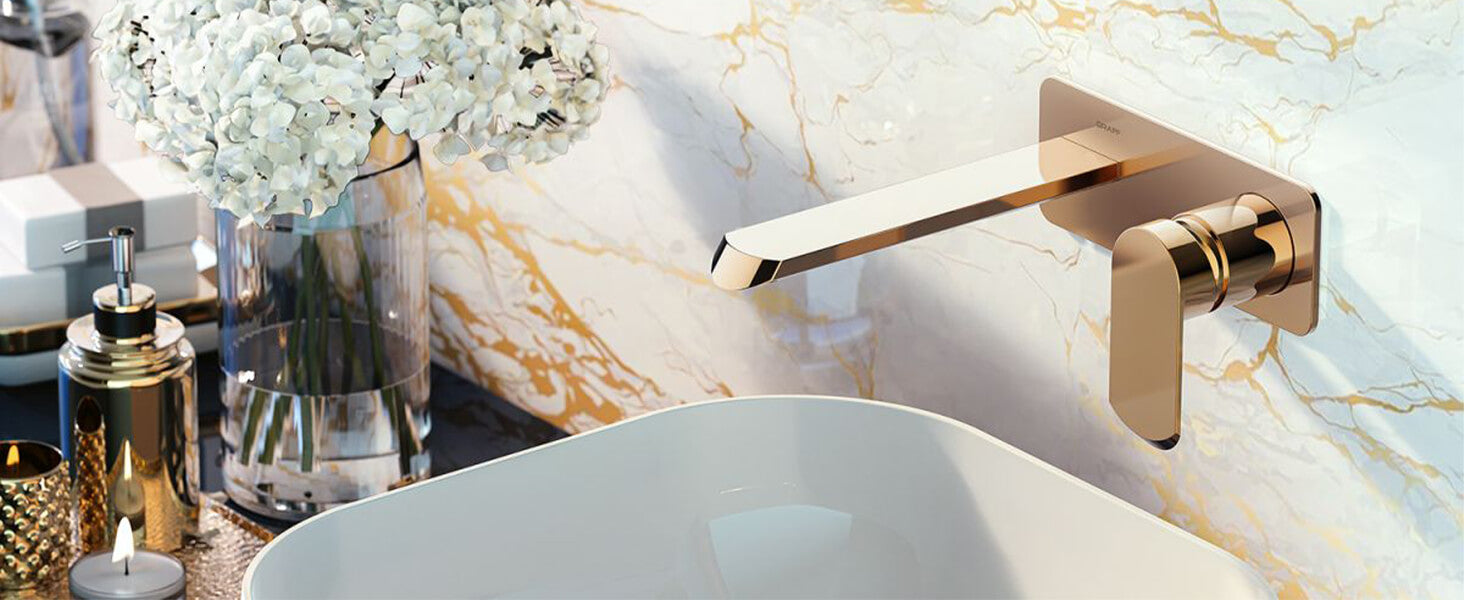Faucets are essential fixtures in modern homes and commercial spaces, performing the crucial functions of controlling water flow and temperature. However, their role goes beyond this, as the faucet design also has a profound impact on the overall aesthetic of a space. Of course, this refers not only to the shape but also to the finish. If you’re considering selecting or replacing a faucet finish for your bathroom or kitchen but are unsure how to choose, this article will provide you with a comprehensive guide to help you make the best decision!
Different Faucet Finish Options
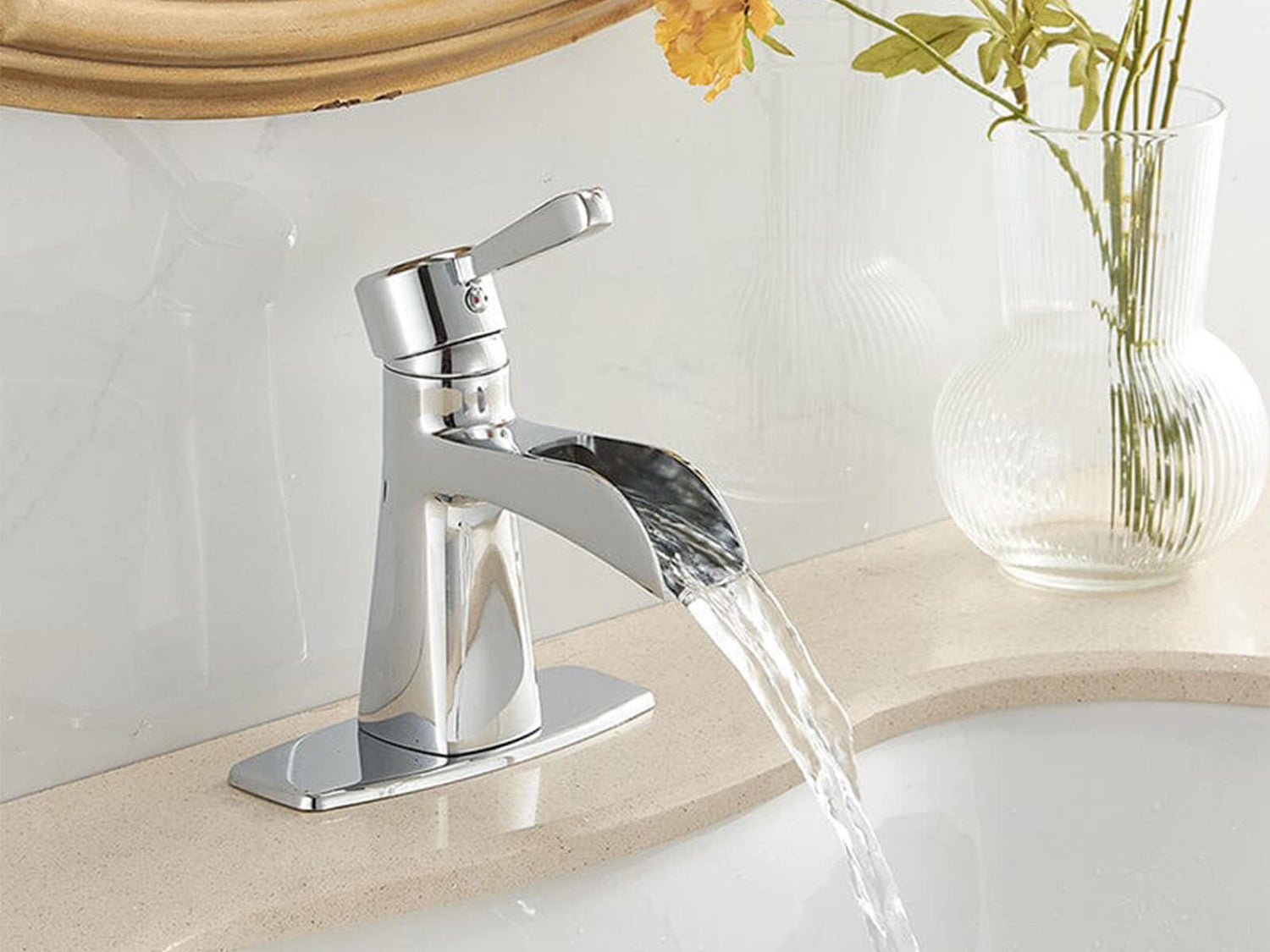
Chrome Plating
Chrome plating is a traditional faucet finish widely used in kitchen and bathroom faucets. It involves applying a thin layer of chromium to a base metal such as copper or stainless steel. This finish enhances the gloss of the metal surface while effectively preventing oxidation and corrosion.
Advantages:
- Chrome-plated surfaces have a mirror-like sheen, creating a clean, polished appearance.
- A versatile finish that blends well with various décor styles.
- Chrome finishes offer better corrosion resistance and scratch resistance, extending the faucet’s lifespan.
Disadvantages:
- Chrome-plated surfaces are prone to fingerprints and water spots, requiring frequent cleaning.
- In extreme environments, the chrome finish may discolor.
- May appear slightly outdated compared to other finishes.
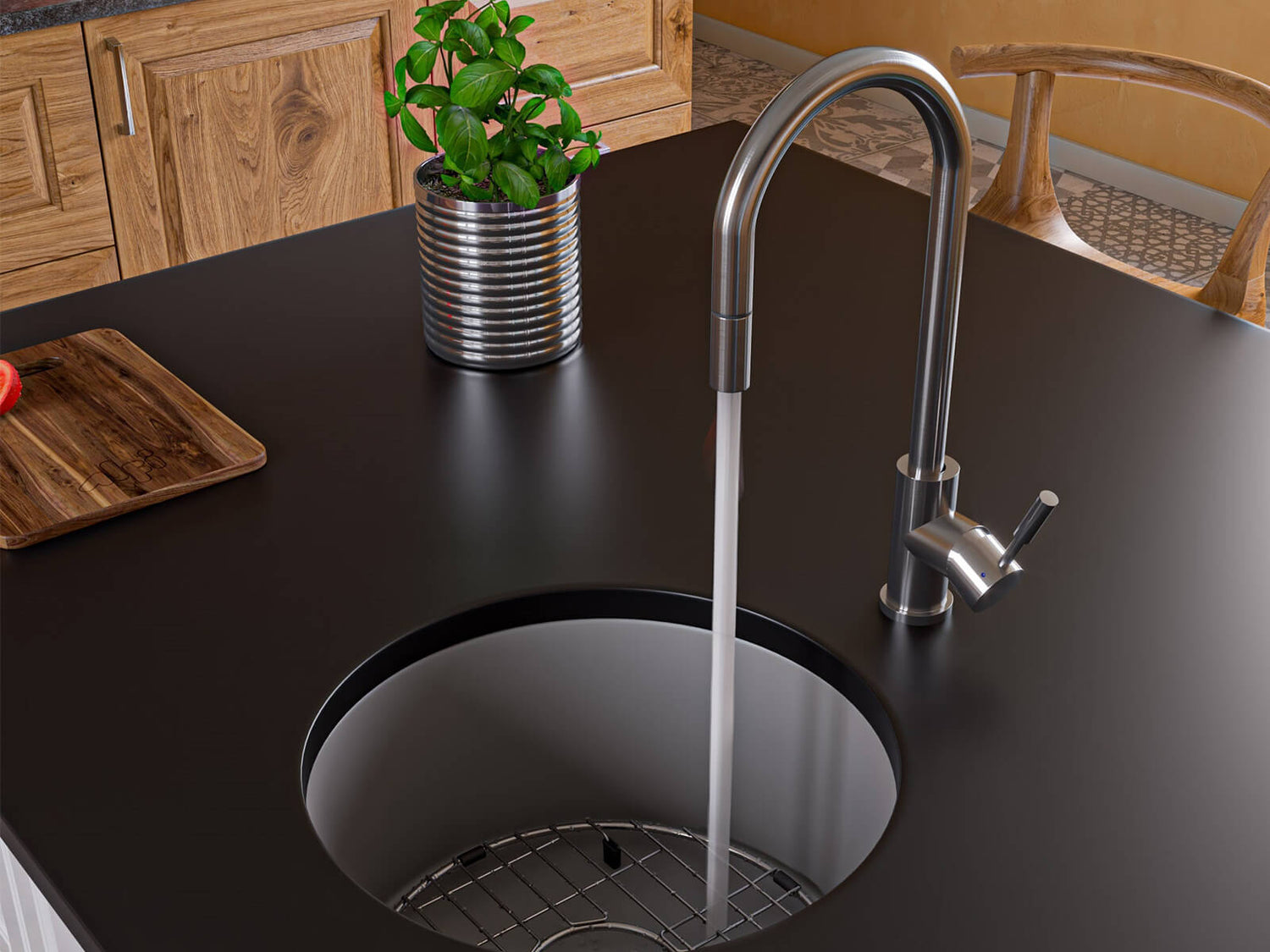
Brushed Stainless Steel
Brushed stainless steel is a specially processed finish that gives the surface a fine linear texture. Compared to shiny chrome, brushed stainless steel offers a more modern look and is more durable.
Advantages:
- The fine texture adds a modern and high-end feel.
- Resistant to fingerprints and water stains, making it easier to maintain.
- Stainless steel itself is highly corrosion-resistant, especially 316 stainless steel.
Disadvantages:
- The rougher surface may make scratches more visible.
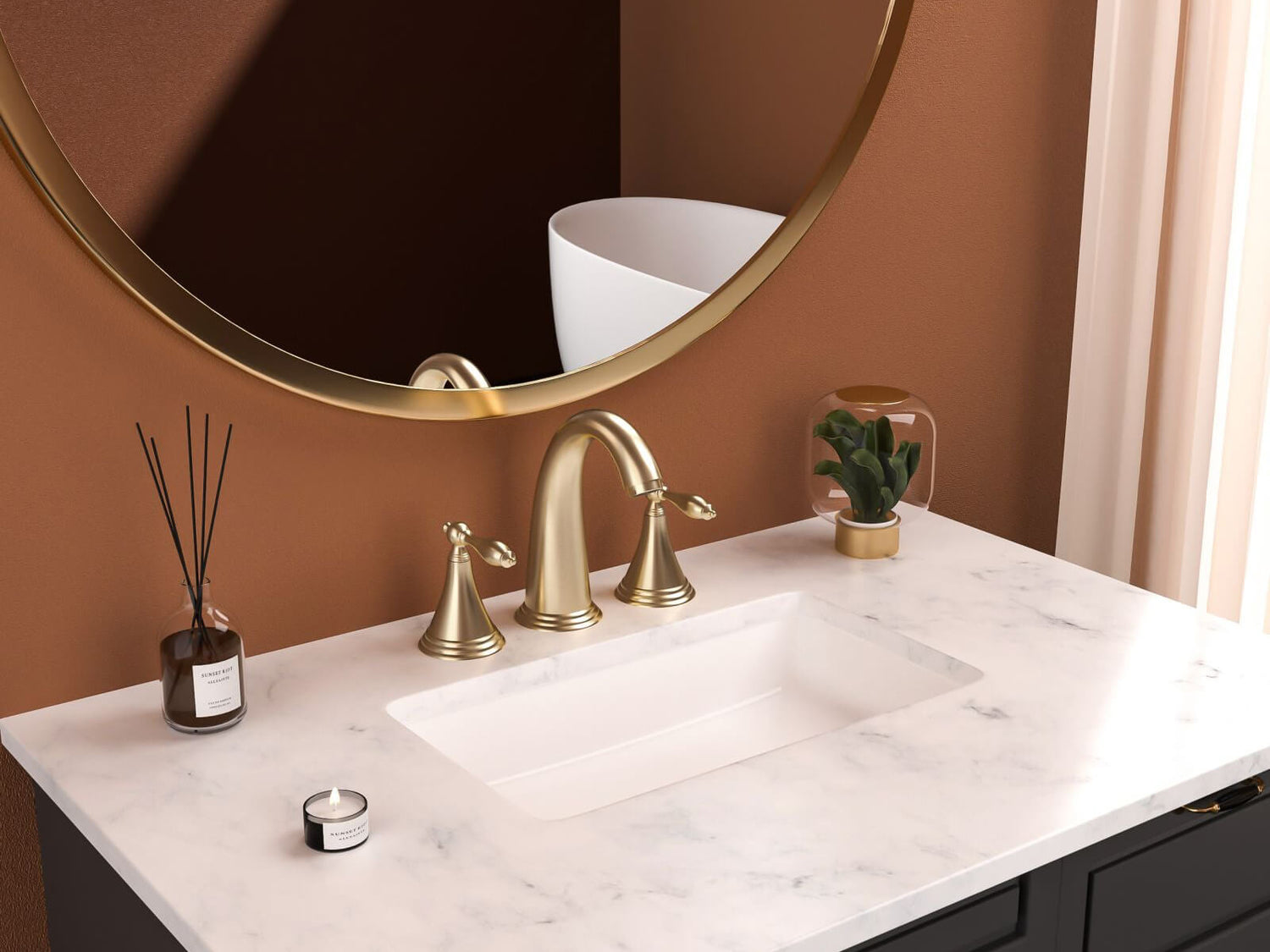
Copper Finish
Faucets with a copper finish are typically made using copper plating, with a warm gold or red hue. Due to this unique color and its classic beauty, copper finishes are often found in vintage or luxurious home designs.
Advantages:
- Offers a noble and elegant appearance, showcasing a retro aesthetic.
- Copper has natural antibacterial properties, helping to inhibit bacterial growth.
Disadvantages:
- Copper is prone to oxidation when exposed to air and moisture.
- Requires regular maintenance to prevent discoloration.
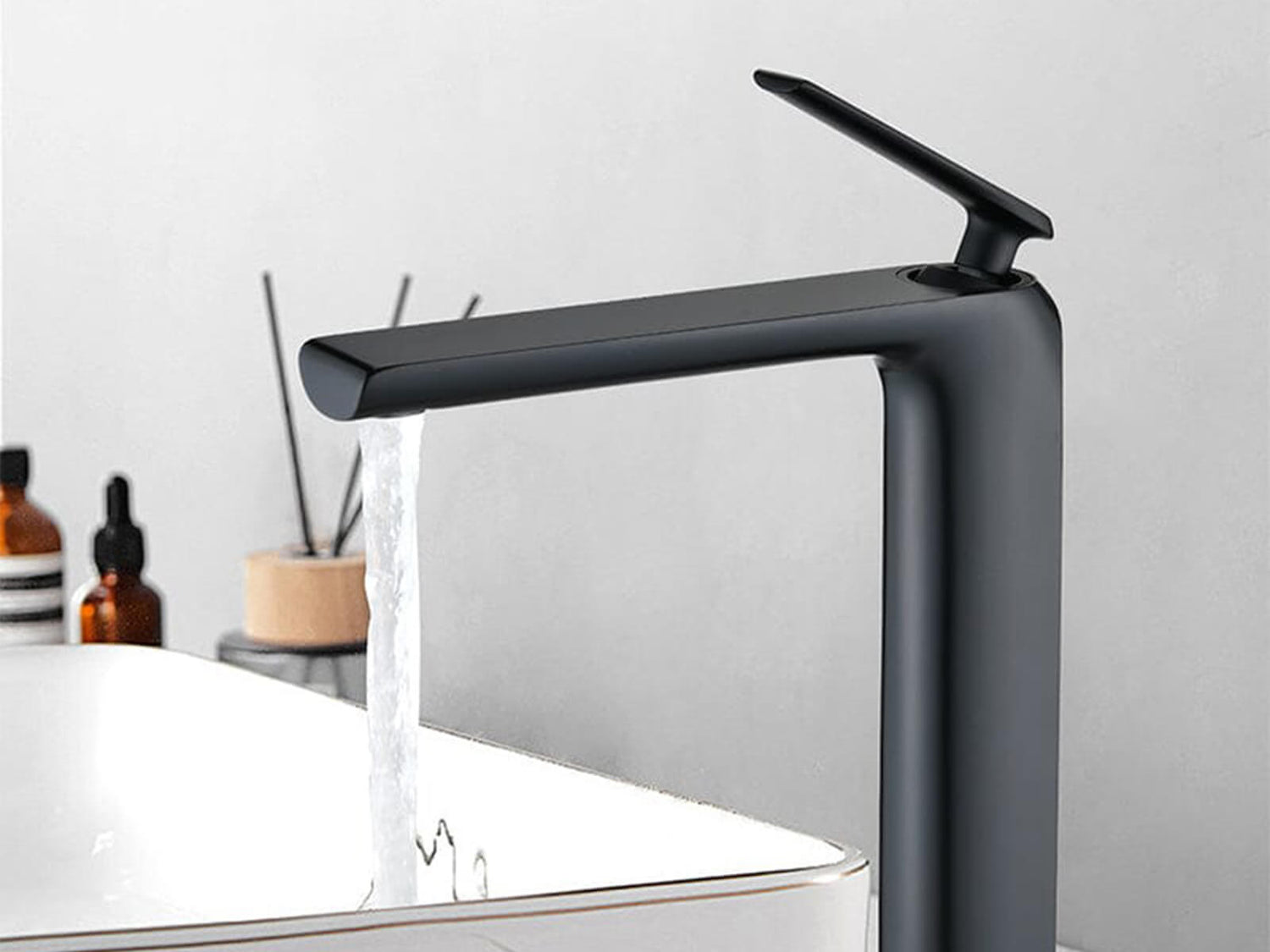
Matte Finish
With its understated texture and modern appeal, matte-finish faucets have become a popular choice in recent years. The surface of the faucet provides a soft, non-reflective effect, creating a clean, elegant, minimalist visual impression.
Advantages:
- The fine texture and feel of the matte finish make it perfect for modern, minimalist décor.
- Less prone to fingerprints, water stains, or oil marks, reducing cleaning frequency.
- Effectively hides small scratches.
Disadvantages:
- Prolonged exposure to sunlight may cause fading.
- Best suited for minimalist and modern interiors, not suitable for all styles.
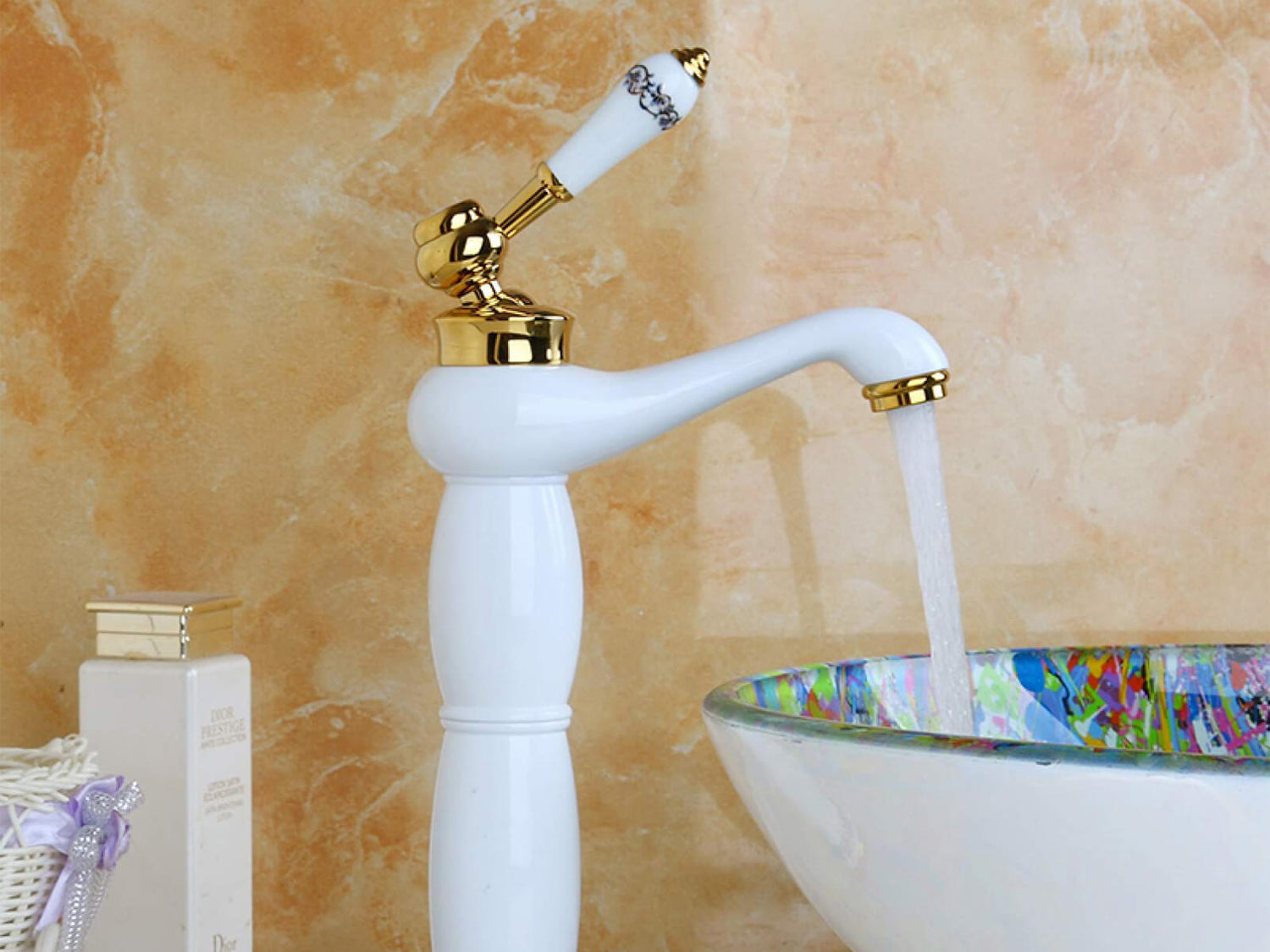
Ceramic Coating
Ceramic coating technology has been widely applied in the faucet industry in recent years. Typically, a layer of ceramic coating or casing is applied to the surface of the faucet. Not only is it elegant and beautiful, but it also boasts excellent wear resistance and dirt-repellent properties.
Advantages:
- Strong anti-stain properties, requiring only simple wiping to restore its original appearance.
- Excellent corrosion resistance, whether for acidic or alkaline substances.
- Can withstand extreme temperature changes, making it suitable for environments with frequent hot and cold water usage.
Disadvantages:
- Lack of reliability; ceramic coatings may crack if impacted.
- Damaged ceramic coatings cannot be repaired and must be replaced.
Tips for Choosing Faucet Finishes
Match with Home Style
When selecting a faucet finish, the most important principle is to match the finish with your home décor style. For modern minimalist homes, chrome, brushed stainless steel, and matte finishes are all excellent choices, with matte finishes often delivering the best results. If your home décor leans toward vintage or luxurious styles, copper or ceramic-coated faucets may be more suitable, as the former provides rich retro charm and the latter offers uniqueness and luxury. For industrial-style interiors, brushed stainless steel is the ideal choice, as its rougher texture complements the cold, rugged aesthetic of industrial design.
Consider the Usage Environment
To extend the faucet's lifespan, it’s crucial to choose a finish that suits the environment in which it will be used. Kitchen faucets are often exposed to grease, dirt, and frequent use, so a finish that is resistant to stains and easy to clean, such as brushed stainless steel, is ideal. For bathroom sink faucets, ceramic and matte finishes are perfect, as they can resist the impact of cosmetics and other daily products while being easy to maintain. For bathtub faucets, wall-mounted faucets are recommended with a matte finish, while deck-mounted faucets are better with a chrome finish. For outdoor faucets, copper finishes are ideal, as they have natural antibacterial properties and sufficient physical resistance, making them suitable for outdoor environments.
Budget and Cost-Effectiveness
When purchasing a faucet, price is always an important consideration, even for those priced at a few hundred dollars. Generally, chrome and brushed stainless steel faucets offer excellent cost-effectiveness. When purchasing brushed stainless steel faucets, it's important to consider the material differences. There are three main types: 201, 304, and 316. The 201 material is of lower quality and should be avoided. The 304 material, which is the standard option, offers good cost-effectiveness and is suitable for most households. For those seeking better corrosion resistance, the 316 material is a high-end choice. Although slightly more expensive, its superior durability makes it a worthwhile investment.
Ending
Faucet finishes are an important element in home design, affecting both the aesthetic and functionality of the space. Choosing the right faucet finish is not only a way to personalize your living environment but also a way to enhance your daily experience. When making a choice, consumers should consider factors such as home style, usage needs, budget, and durability to select the most appropriate faucet finish, ultimately bringing both beauty and functionality to their home space.
More Ideas
-

Vessel vs. Undermount Sinks: Which Fits Your Bathroom Best
When you’re updating a bathroom, the sink you choose does more than just hold water—it sets the tone for the entire space. The right style can elevate your vanity, influence...
-

Are Vessel Sinks Still in Style?
If you’re remodeling your bathroom in 2026, you might be wondering: are vessel sinks still in style? For many homeowners, this is a common question when deciding on a bathroom...
-

What Is a Vessel Sink?
If you’re tackling a bathroom renovation for the first time—or you’re simply dreaming up a vanity that feels a little more “you”—stepping into a bath showroom can feel like walking...
-

10 Bathroom Vessel Sink Ideas to Inspire Your DIY Vanity
When it comes to bathroom design, sinks often end up being treated as purely functional fixtures—useful, but not exactly inspiring. That’s why so many vanities end up looking alike: predictable...
-

How to Install a Vessel Sink in 4 Easy Steps
If the dimensional look and artistic appeal of a vessel sink have already captured your attention, then now is the perfect time to upgrade your bathroom with one. Whether you...
-

Vessel Sink Pros and Cons
In bathroom remodeling, the sink is one of the most frequently used fixtures, and your choice directly affects daily convenience and the overall look of the space. In recent years,...

